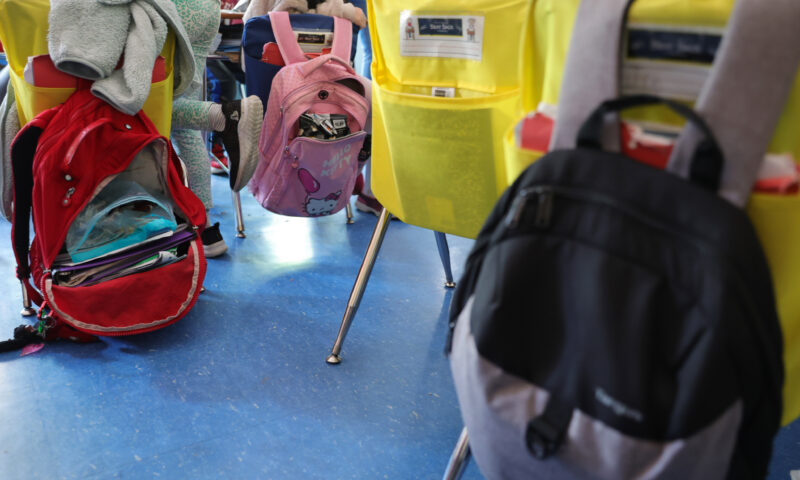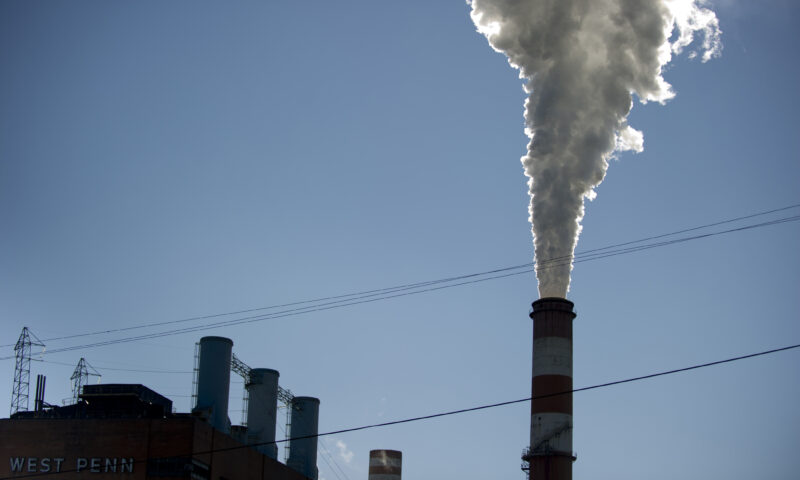Learning Curves
Oakland Teachers Strike Enters Day Seven
Negotiators have been trying to hammer out a deal for smaller classes, more student resources and wages capable of retaining teachers squeezed by gentrification.

“Learning Curves” is a weekly roundup of news items, profiles and dish about the intersection of education and inequality. Send tips, feedback and announcements of upcoming events to braden@capitalandmain.com, @BillRaden.
The Oakland teachers walkout entered its seventh day today, capping a tumultuous week. Wednesday saw hundreds of striking educators and community activists successfully shut down an Oakland Unified school board meeting set to approve $20.2 million in budget cuts. The vote had been scheduled to qualify Oakland Unified for a controversial $34.7 million state bailout bill, passed last year, which set a March 1 deadline for the OUSD board to sign off on a multiyear, $27.4 million spending-reduction package that also targeted up to 24 Oakland public schools for closure.
“We just destroyed their plan tonight,” said Oakland Public Education Network (OPEN) organizer Mike Hutchinson, commenting on the unlikelihood of the board now meeting that deadline. “Now that this is off the table, it will allow the school board to settle a contract with our teachers.” [Update: The OUSD school board has rescheduled the budget cuts vote today at 2 p.m. The union has vowed to again shut down the meeting with pickets.]
Negotiators have been trying to hammer out a deal over union demands for smaller class sizes, more student resources and support staff, and wages capable of retaining teachers squeezed by gentrification. “Teachers can’t afford to stay in Oakland,” teacher Rosa Kurshan-Emmar told Learning Curves earlier in the week at a picket line in front of East Oakland’s Havenscourt campus. “Districtwide, 20 percent of teachers leave OUSD every year. Our students also deserve more counselors and more nurses. I’m prepared to stay out as long as it takes for our district leadership to step up and for the state to support school districts that serve poor kids of color and the teachers that teach in those places.”
Providing those nurses to Oakland schools may be easier bargained for than done. That’s the conclusion of an EdSource report this week on California’s chronic nursing shortage. The Golden State’s 2,500-to-1 student-to-nurse ratio is already among the highest in the nation, with the shortfall of RNs expected to grow to more than 140,000 by 2030. Districts like L.A. Unified, which last month settled the six-day Los Angeles teachers strike by promising to hire 300 new school nurses, will be hard-pressed to compete. Health care providers pay nurses on average more than $95,000 in Los Angeles compared to less than $80,000 offered by LAUSD. But it gets worse: Even if LAUSD or Oakland ponied up the more than $10,000 for the two additional years of schooling required for a school nursing credential, that still wouldn’t address the state’s chronic shortage of nursing professors.
At least one universal demand by striking California teachers is now being realized — namely, reigning in the state’s 21-year experiment in unregulated charter schools. This week, Assembly Democrats introduced a range of bills that would put elected school boards in charge of deciding where and what kind of schools will best serve the needs of students. The bills would:
- Close the loophole that allows charters turned down by districts to have those denials reversed by the county or the state
- Institute a statewide cap on unilateral charter school expansion
- Enable school boards to honor their fiduciary obligation to voters by factoring in their district’s financial health when considering a new charter petition
- Prevent charter schools authorized in one district from opening in an adjoining district without that district’s knowledge and permission
- Require charter school boards to operate with the same open-meeting, conflict of interest, and disclosure laws that district school boards follow
Hate incidents at U.S. college campuses are still on the rise, a new study has confirmed. The Report and Survey on Uncivil Hate and Bias Incidents on Campus found that 82 percent of university diversity, student affairs office staffers, or other equal opportunity professionals encountered a campus hate crime, and over three-fourths reported encountering a hate-based episode within the last two years. Examples were racial slurs written in public places and dormitories, and a proliferation of white supremacist leaflets with racist or Nazi symbols. The data echo the FBI’s annual Hate Crime Statistics survey, which for 2017 reported a nearly nine percent surge in campus hate crime incidents from the previous year.
Those who worried that the civility and respect that has thus far characterized L.A.’s March 5 special school board election might mean that Angelenos will be deprived of one of the more colorful traditions in LAUSD ed politics can now relax. That’s because last week an independent expenditure committee unleashed a $112,000 torrent of attack ads in a final-stretch smear directed at veteran progressive Jackie Goldberg — the only negative mailers to so far appear in the campaign.
Copyright Capital & Main

-

 The SlickNovember 14, 2025
The SlickNovember 14, 2025Can an Imperiled Frog Stop Oil Drilling Near Denver Suburbs? Residents Hope So.
-

 The SlickNovember 12, 2025
The SlickNovember 12, 2025Known for Its Oil, Texas Became a Renewable Energy Leader. Now It’s Being Unplugged.
-

 Column - State of InequalityNovember 13, 2025
Column - State of InequalityNovember 13, 2025Barring a Sharp Shift, Health Insurance Costs Will Skyrocket
-

 Latest NewsNovember 19, 2025
Latest NewsNovember 19, 2025How Employers and Labor Groups Are Trying to Protect Workers From ICE
-

 Latest NewsNovember 18, 2025
Latest NewsNovember 18, 2025Future of Special Education at Risk, Teachers Say, as Trump Moves to Cut Staff and Programs
-

 The SlickNovember 18, 2025
The SlickNovember 18, 2025After Years of Sparring, Gov. Shapiro Abandons Pennsylvania’s Landmark Climate Initiative
-

 Latest NewsNovember 17, 2025
Latest NewsNovember 17, 2025In South L.A., Black and Latino Neighbors Unite Against ICE as Systems Fail
-

 Column - State of InequalityNovember 21, 2025
Column - State of InequalityNovember 21, 2025Seven Years Into Gov. Newsom’s Tenure, California’s Housing Crisis Remains Unsolved

